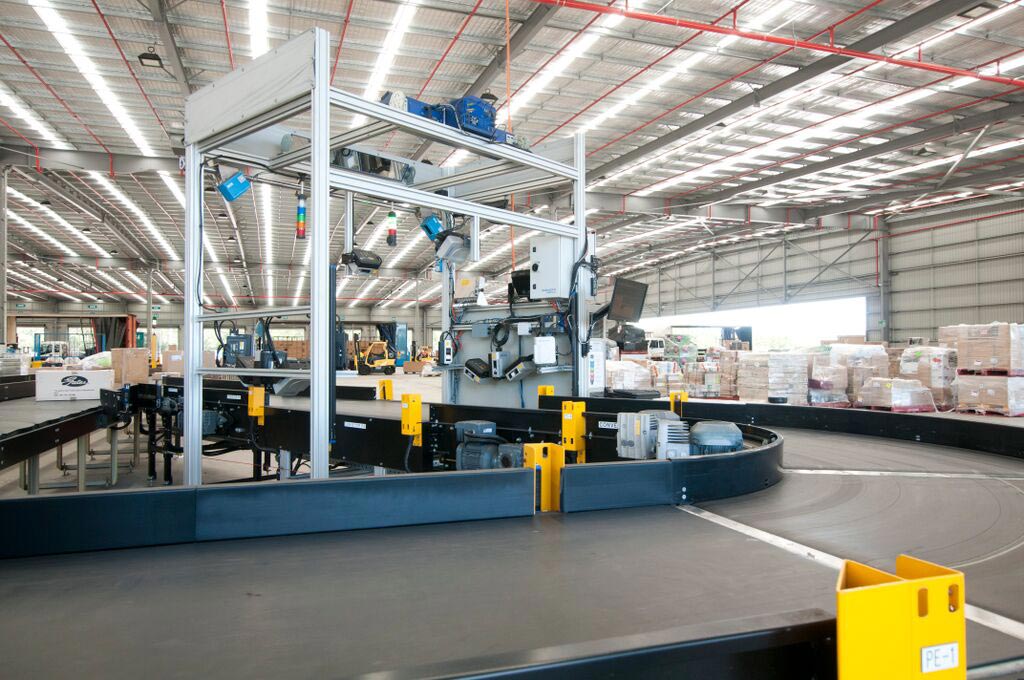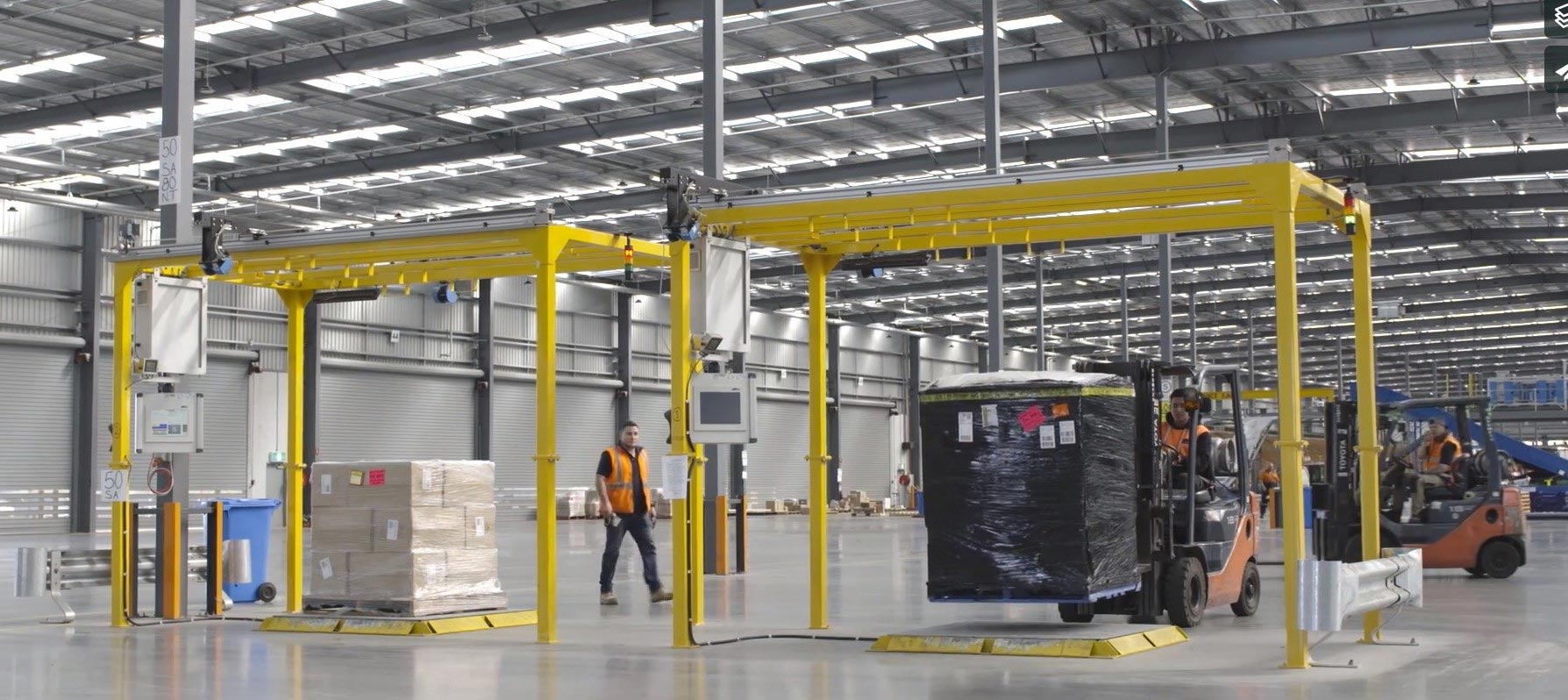
What is Dimensioning?
Cubiscans, dimensioning products, and automated Dimension Weigh Scan systems are critical measurement tools used in the logistics and supply chain sectors to automatically capture and determine the weight and cubic dimensions (LWH) of warehouse and eCommerce stock keeping units (SKUs) and fulfilment orders; as well as parcel and pallet freight items in air, road, and sea freight logistics and shipping applications.
These sophisticated measurement instruments or systems determine the weight, length, width, and height of the items that are measured. Combined with image capture, barcode scanning, and software applications the captured data is formatted in a digital item-level file and exported in near-real time to the user’s host IT applications for further processing.
Why is Dimensioning Important?
At its very core, dimensioning is important in the supply chain because storage and transport space is finite and expensive; and this – in addition to the materials handling and fulfilment activities – is what is being sold: the physical space in warehouses, distribution centres, cross docks, and logistics facilities; and the space in vans, trucks, trailers, airplanes, ships, and shipping containers.
As space is sold based on a commercial formula relating to cubic meterage (see “dim weight” below) it makes sense that supply chain businesses should be efficient at measuring the space that they supply. This should be a core competency: efficiently and accurately capturing and digitally exporting the identification and measurement data of the SKUs, parcels, pallets and other items that that are shipped, stored, managed, or otherwise processed.
In the warehousing, logistics, and 3PL sectors our customers use the different Cubiscan models for both inbound and outbound applications to automate the process of dimensioning and weighing SKUs, packed orders, or pallets and exporting accurate item measurement data into their Warehouse Management System or Transport Management System.
Accurate SKU dimensional master data is required by WMS and WCS systems in order to make intelligent processing and optimisation decisions. Click here to learn more about “How Intelligent DC Automation is Redefining SKU Metrics”. Click here to learn “Ten Ways to Supercharge your WMS with Accurate SKU Dimensional Master Data”.
In the express parcel and eCommerce fulfilment sectors our customers use the different Cubiscan models or Dimension Weigh Scan systems in a legal-for-trade, revenue-assurance application to accurately measure and capture parcel and/or freight item weight and dimensions and export this data to their host freight management applications.
In the Express or General Pallet Freight sector our customers use the Cubiscan 1200 AKL and other DWS models in a legal-for-trade, revenue-assurance application to accurately measure and capture pallet and larger freight and cargo item weight and dimensions and export this data to their host freight management applications.

In the international air freight and freight forwarding sector our customers use our dimensioning and DWS automation equipment to capture accurate pallet or parcel weights and dimensions to ensure correct item weight and dimensional consignment data is declared in air freight shipping manifests.
Why should I buy my dimensioning and dimension weigh scan solution from a “Systems Integrator”? Diverseco are a specialist systems integrator with deep knowledge and expertise across multiple domains of expertise that include: weighing, dimensioning, barcode scanning, materials handling, engineering, integrated system and plc control software. We are able to integrate discrete components from almost any global hardware vendor into a comprehensive whole. As a systems integrator, we supply and support an integrated solution, rather than just supplying a piece of measurement hardware.
What is DIM Weight?
Dimensional Weight (also referred to as DIM weight, volumetric weight, or cubic weight) is the relationship of cubic size of the shipping carton or packaged/wrapped/bagged item to the actual weight of the item. Shipment pricing based on dimensional weight has been applied in air freight for many years because the amount of space utilized by a shipment, given that there is finite space on the plane, was a bigger cost factor to airlines than the actual weight of the shipment. Think about shipping a large box of ping pong balls that weigh virtually nothing but take up a large amount of physical (cubic) space.
Essentially, dimensional weight establishes a density factor that defines the ratio of a shipping box size to its weight in terms of “chargeable kgs”.
DIM Weight Example. In Australia, many road freight shipping companies have a Dim Weight formula that equates 1 cubic meter of physical space (i.e. a box that is 1m x 1m x 1m LWH) to 250 kgs. If the price to ship the item from point A to point B was 1$ per kg, then the price to ship would be $250 regardless of what weight the item was, up to 250 kg. In this case the shipper is charged by the “cubic weight”. If, however, this same item weighed 300 kg then the price to ship would instead be $300, in this example, and would be charged based on the actual weight.
Dimensioning Irregular Shapes
How do you determine the cubic dimensions of an irregular shape like a large round ball or a large truck tire? Afterall, these items can be both stock keeping units and items that can be shipped individually from one location to another.
Dimensioning instruments that are capable of determine the length width and height of an irregular shape don’t actually measure the physical sides of an item but are able to determine the ‘smallest cuboidal shape or imaginary box that item would fit into’. In other words, using lasers, camera-based imaging or infrared sensors, they calculate the smallest box the ball or tire would fit into. This definition is consistent with the requirements of the Australian National Measurement Institute and with the OIML or the International Organization of Legal Metrology.
What is Legal-For-Trade (LFT) Weighing and Dimensioning?
According to the Australian National Measurement Institute, and the OIML, a measuring instrument is considered to be ‘in use for trade’ if it is used to determine the measurement of an item or service (e.g. freight) from which the price of the service is calculated. This includes measuring instruments that are used to check the quantity of a package, and to make adjustments to the measurements in the transaction. If such an instrument is used to determine a measurement for which a price is charged, they must be NMI approved and verified by a servicing licensee – like Diverseco.
What are the Responsibilities of LFT Measuring Instrument Users?
Owners of measuring instruments used for trade are responsible for the accuracy of their measuring instruments. The instruments must:
- Be of a type approved by the NMI
- Be verified as accurate by a servicing licensee or inspector before they are used
- Be used in the correct manner (e.g. level and indicating zero before use)
- Be kept clean and in good working order
- Be properly installed and appropriate for the intended use
- Be used correctly by staff who have had adequate training in their correct use.
Diverseco are Licensed NMI Verifiers
Diverseco, as a company, as well as many of our technical staff are licensed by the Australian National Measurement Institute and ‘SPRING’ in Singapore to verify approved weighing and dimensioning instruments and have deep expertise regarding legal for trade parcel and pallet freight measurement systems and requirements.
What does ‘revenue leakage’ and ‘revenue recovery’ mean in the transport industry – and why is dimensioning important to this? Revenue leakage is a critical challenge in transport industry – particularly in the less-than-truckload (LTL) and less-than-container load (LCL) sectors. Specifically, when a customer (a shipper) declares that a parcel or pallet’s dimensions and/or weight are less than they actually are then the shipping service provider will ‘leak revenue’ that would otherwise be due to them were the correct declarations made originally.
Revenue recovery occurs when the parcel is measured by a legal for trade instrument and its true dimensions and weight are captured and recorded and used to amend the shippers original declarations so that the shipper is charged correctly for either the weight or space (ie the Dim Weight) that is used as the basis for the shipping fee. Use of the legal for trade measurement systems is part of an overall revenue assurance process.
How is Dimensioning Automation Part of Industry 4.0? Dimensioning automation is fundamental part of digitization in the supply chain; that is, in the creation of the digital supply chain ecosystem. SKU, parcel, or pallet weight and dimensional data are captured, tracked, traced, and otherwise processed in real time, eliminating manual measurement or manual data entry and further ensuring data integrity. It is the transition from analogue processes to digital processes supported by the internet and/or stakeholder digital networks. Dimensioning and weighing automation is a key part of ‘smart warehousing’.
The digital supply chain, as some have envisioned it, consists of eight key elements: integrated planning and execution, logistics visibility, Procurement 4.0, smart warehousing, efficient spare parts management, autonomous and B2C logistics, prescriptive supply chain analytics, and digital supply chain enablers.
Companies that can put together these pieces into a coherent and fully transparent whole will gain huge advantages in customer service, flexibility, efficiency, and cost reduction; those that delay will be left further and further behind. For some supply chain companies dimensioning automation plays a critical part in the digital transformation of their businesses.
Dimensioning and Robotics
In competitive and growing markets where labour costs continue to rise, the quest for ever increasing levels of automation is driven by the need to achieve operational efficiencies, improved productivity, reduced physical labour involvement, and improved occupational health and safety.
As exclusive agents for Kawasaki Robotics and a variety of related value-add components, Diverseco are ideally positioned to partner with our customers to develop new automation solutions that integrate sophisticated technologies across multiple domains of automation and expertise. Talk to us about your ideas and challenges and we can work together to develop the solution.
New Frontiers in Automation
At Diverseco, our customers are challenging us to develop new systems of automation that combine dimensioning, weighing, barcode scanning, image capture, machine vision, remote plc and software diagnostics, integrated processes like robotic pick and place, pallet building, pallet wrapping, shipping label print & apply, and more into one seamless process that can work, for example, also with integrated automated guided vehicles (AGVs). New frontiers in dimensioning automation, robotics, cyber-physical systems, and digitisation in the supply chain are emerging every day.

